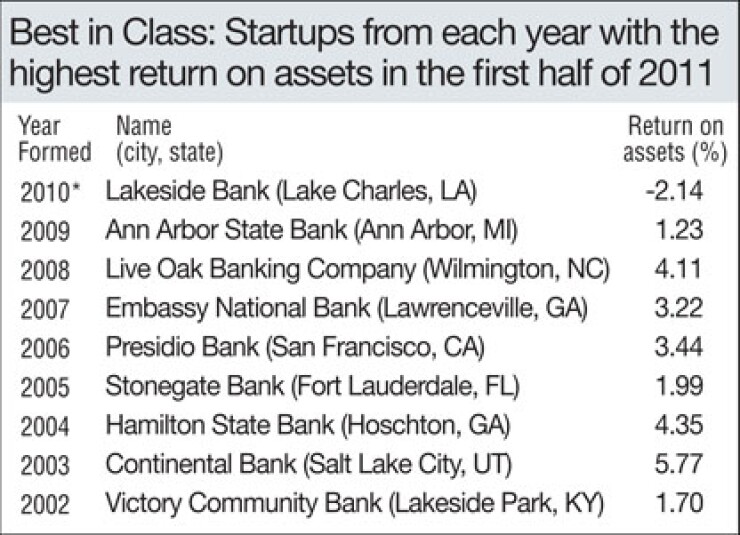

Like the construction and real estate loans they financed, the past decade's startup banks have failed in alarming numbers. Almost 9 percent of the roughly 800 banks opened since 2002 have been seized by regulators, about twice the industrywide pace.
The two largest startups to fail, First Georgia Banking Co. in Franklin, Ga., and FirsTier Bank in Louisville, Colo., had assets of more than $700 million when they were seized this year. But the ranks of new institutions that have persevered despite an inhospitable economy outnumber the spectacular flameouts. Some, including a few that have been repurposed as vehicles to buy up fallen peers, have prospered. (See charts. For underlying figures and to access additional data in an Excel spreadsheet,
Talmer Bank and Trust in Troy, Mich., the operating unit of Talmer Bancorp, was founded in 2007 as First Michigan Bank and is now, with more than $2 billion of assets, one of the better performing de novos, with a 2.9 percent return on assets for the first half of 2011. Among banks formed in 2007, only Embassy National Bank, a comparatively tiny, $56 million-asset institution in Lawrenceville, Ga., did better, with an ROA of 3.22 percent. With the help of
Banks that were established from 2005 through 2007, just before the onset of a deep recession, had





